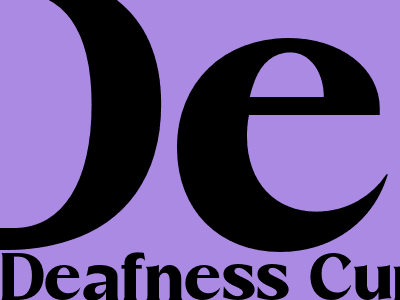Deafness Cure: Restoring Hearing Loss and Its Implications
Understanding Deafness and Hearing Loss
Deafness, the complete or partial loss of hearing ability, affects a significant portion of the population. Hearing loss can arise from various factors, including genetics, environmental noise exposure, aging, and certain medical conditions.
The severity of hearing loss varies from mild to profound, impacting an individual's ability to communicate, socialize, and navigate daily life. Understanding the causes and consequences of deafness is crucial for developing effective treatments and support systems.
Current Treatment Options for Deafness
Traditional treatments for deafness have focused on assistive devices, such as hearing aids and cochlear implants. Hearing aids amplify sound, while cochlear implants bypass damaged parts of the inner ear to directly stimulate the auditory nerve.
These devices provide varying degrees of hearing restoration, depending on the individual's specific hearing loss. However, they do not represent a complete cure for deafness and may have limitations or drawbacks.
Advances in Deafness Research: Stem Cell Therapy and Gene Editing
Recent advancements in medical research offer promising new avenues for treating deafness. Stem cell therapy involves using stem cells to regenerate damaged or lost cells in the inner ear, potentially restoring hearing function.
Gene editing techniques, such as CRISPR-Cas9, hold the potential to correct genetic mutations that cause deafness. By targeting and modifying specific genes, researchers aim to restore normal hearing function at the genetic level.
Challenges and Ethical Considerations
While these research advancements provide hope for a potential cure for deafness, they also present challenges and ethical considerations. Stem cell therapy and gene editing techniques are still in their early stages and require further research to ensure safety and efficacy.
Additionally, the implications of a potential cure for deafness raise questions about the societal and cultural perspectives on deafness. It is essential to engage in open and inclusive discussions involving individuals with hearing loss to inform decision-making processes.
Conclusion: The Future of Deafness Treatment
The pursuit of a cure for deafness is an ongoing endeavor that requires continued scientific research and ethical dialogue. Advancements in stem cell therapy and gene editing offer promising avenues for restoring hearing function.
However, it is crucial to proceed with caution, ensuring the safety and effectiveness of these treatments. By addressing the challenges and ethical considerations, we can strive for a future where hearing loss is no longer a barrier to full and meaningful participation in society.

Comments